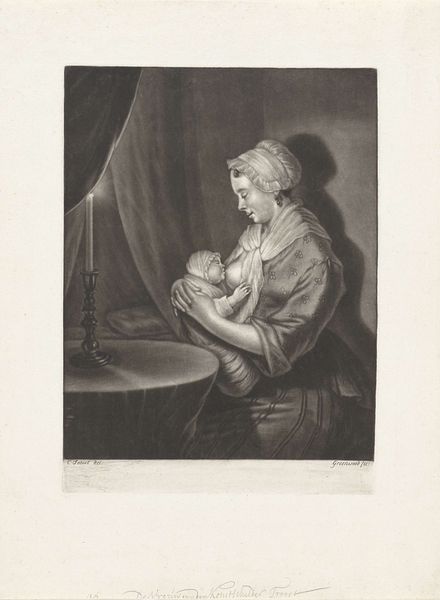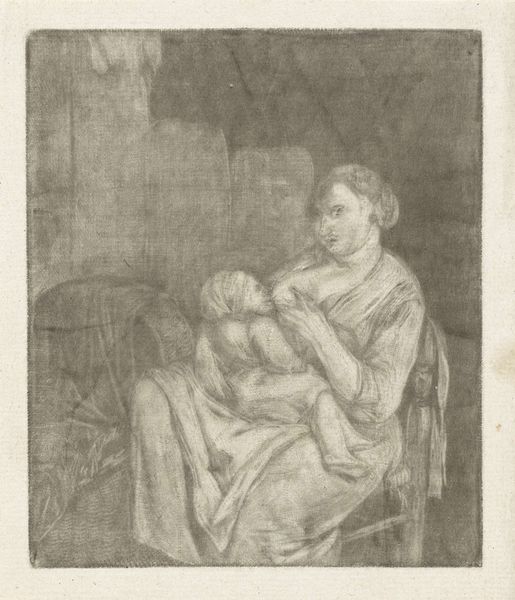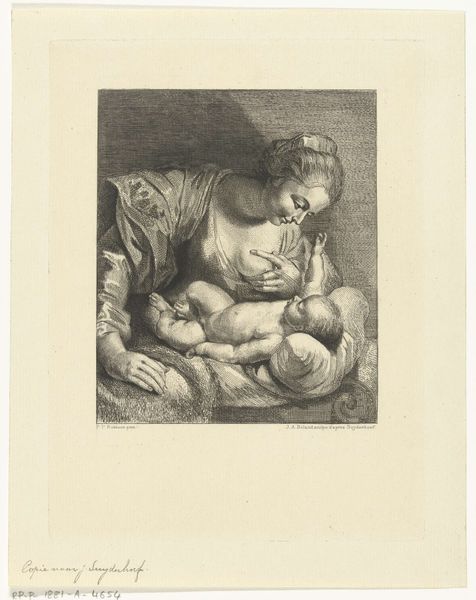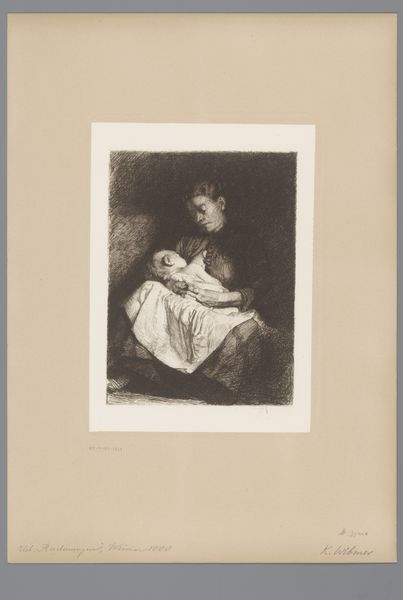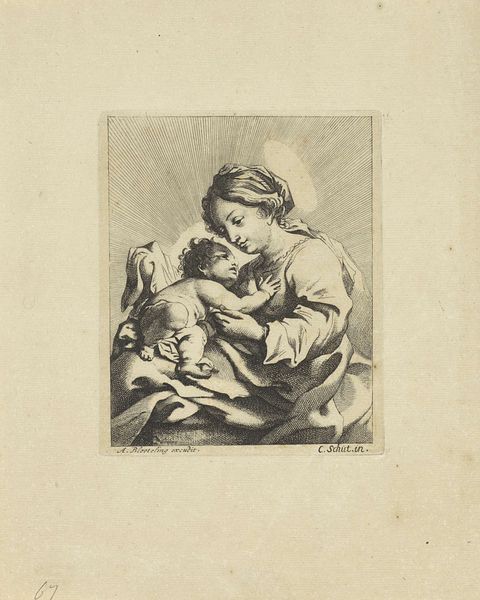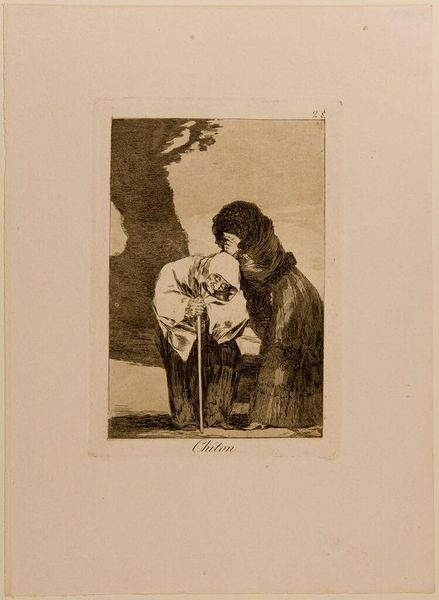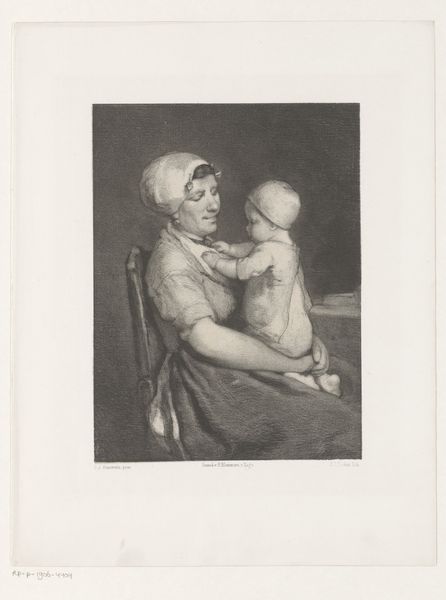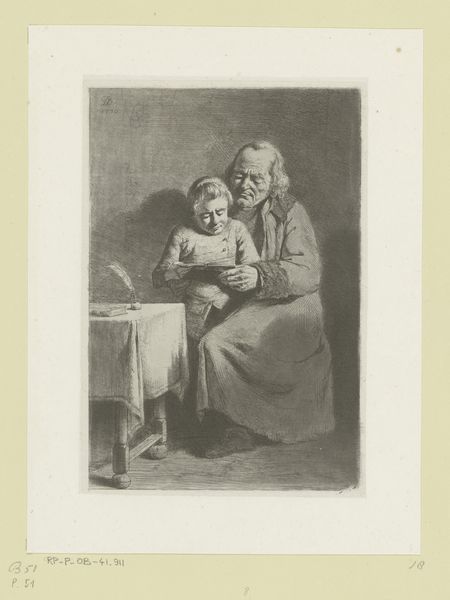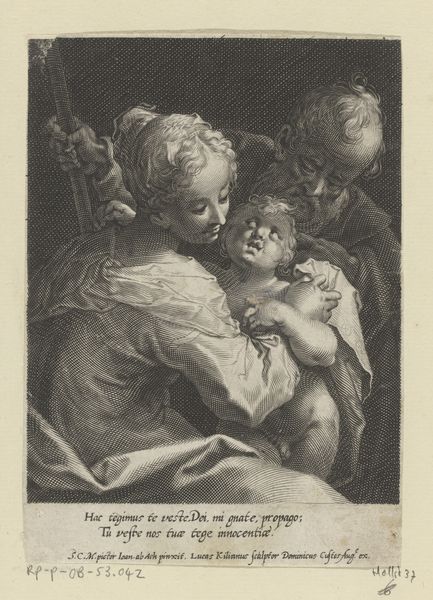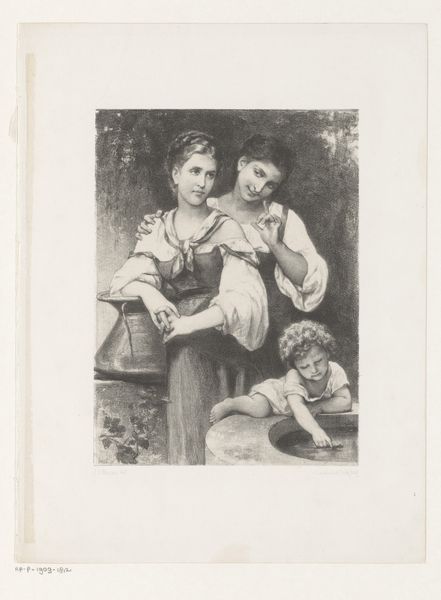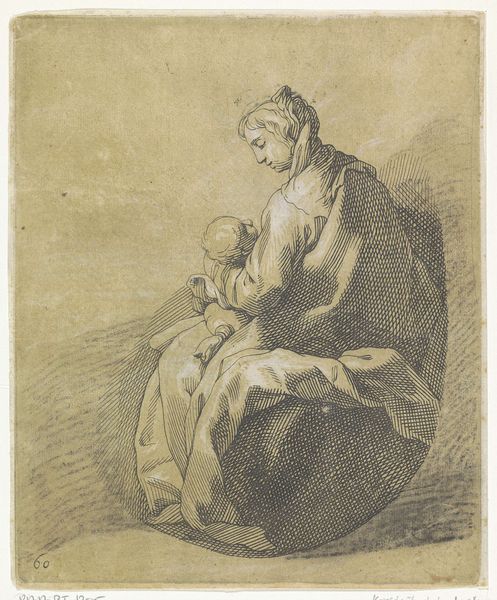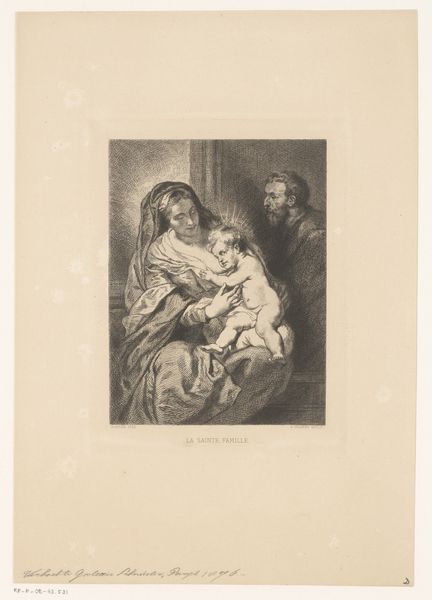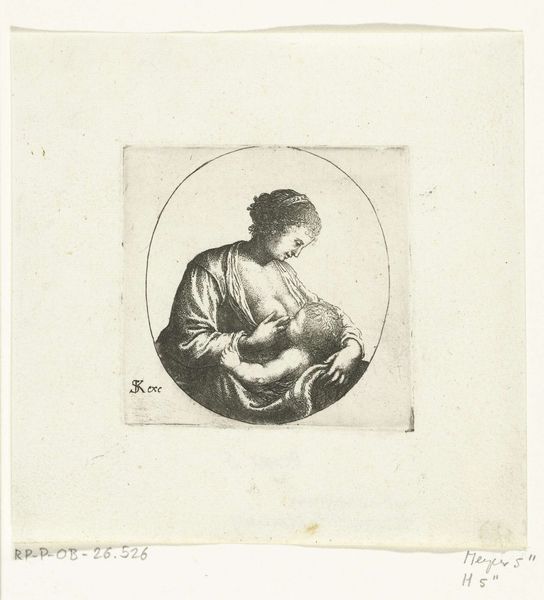
drawing, graphite
#
portrait
#
drawing
#
charcoal drawing
#
pencil drawing
#
group-portraits
#
romanticism
#
graphite
#
graphite
Dimensions: height 201 mm, width 171 mm
Copyright: Rijks Museum: Open Domain
Curator: Jan Chalon’s work, titled “Moeder met kind en kat,” created in 1802, immediately draws the eye with its intimate depiction. The piece, rendered in graphite, evokes a tender yet somber mood. Editor: It certainly does. The artist’s use of delicate lines and subtle shading contributes to a sense of quiet contemplation. Note how the composition, almost entirely in shades of grey, emphasizes the emotional gravity of the scene. Curator: This piece operates within the social context of early 19th-century domestic life, and what seems at first to be a simple family portrait holds within it complexities concerning gender and social expectations of motherhood at the time. What is she thinking? We do not know. Yet the piece feels raw and unrehearsed in ways other works of the time seemed not to. Editor: Raw indeed, and note the clever arrangement of light. The subdued palette really heightens the sense of melancholy. I’m also intrigued by how Chalon used varied line weights to create texture and depth, and to make those heavy fur garments contrast with the lighter skin tones of the figures' faces. Curator: Indeed. Look at the maternal role emphasized but still individualized through the clothing she wears. What is so intriguing is the contrast that this work makes with standard idealized motherhood and representations of the time, making her appear worn by the realities of the world in ways that allow access to her soul. Editor: And this brings us to consider how we decode a work of art, interpreting the subject through composition, form, line and material expression, not as merely reflecting a social reality. Here the use of the Romantic style and graphite allows this picture to express ideas far larger than the setting. Curator: What a profound intersection we find between our methodologies! This work invites consideration through both lenses—examining its role within society and also understanding how this intimate portrayal provides access to a woman's complex emotions and what they represent outside the domestic. Editor: I concur! Exploring both artistic qualities and contextual dimensions leads to a deeper, more nuanced understanding of the artist's choices.
Comments
No comments
Be the first to comment and join the conversation on the ultimate creative platform.

